5 Ways to Increase Transfer Speed of USB 3.0 External Hard Drive
How to Speed Up a USB 3.0 External Hard Drive in Windows 10/8/7
If your hard drive is slow, you are in the right place. This page walks you through the way to speed up and increase a USB 3.0 external hard drive for data transferring or file copying in Windows 10, 8, or 7, etc. If you are having one of the problems listed below, you'll need to find a way to improve the performance and speed up your external hard drive:
- 1. Copying files stops halfway
- 2. External hard drive transfer speed slow
- 3. File copying slow on USB 3.0 flash drive or external hard drive
- 4. The computer gets stuck while copying or transferring files to USB 3.0
- 5. PC freeze on copying files from USB 3.0...
To increase the transfer speed of the external hard drive, we listed the five best methods for fixing this issue, and you can apply any one of them for a try:
| Workable Solutions | Step-by-step Troubleshooting |
|---|---|
| 1. Optimize the Performance | Connect your external hard drive to your PC. Open Windows File Explorer...Full steps |
| 2. Convert USB 3.0 Drive to NTFS | Install and launch Qiling Partition Master on your computer...Full steps |
| 3. Fix Corrupted System Files | Press Win + X to bring up the Power User menu and select Command Prompt...Full steps |
| 4. Clean Up Junk Files | Download Qiling CleanGenius for free and install it on your computer...Full steps |
| 5. Format External Hard Drive | Connect your external hard drive to a Windows 10 PC. Open File Explorer, locate and right-click...Full steps |
Tip 1. Optimize External Hard Drive Performance to Increase Speed
When the storage devices get slow, one quick way to improve the device's performance is to change the device hardware settings. Follow the steps below to speed up your external hard drive.
Step 1. Connect your external hard drive to your PC.
Step 2. Open Windows File Explorer, locate and right-click on your external hard drive, choose "Properties".
Step 3. On the Hardware tab, click "Properties", and choose "Change Settings" on the General tab.
Step 4. Click the "Policies" tab, choose "Better performance", and click "OK" to confirm all the changes.
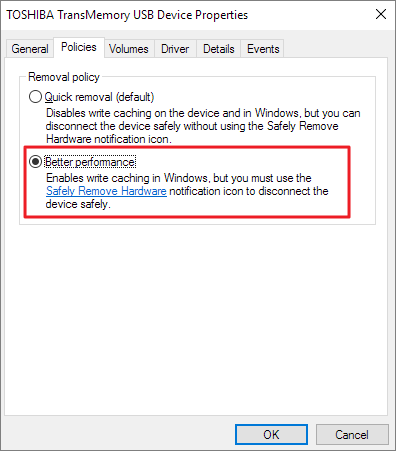
Then, you can check if your external hard drive has become fast in speed.
Tip 2. Convert USB 3.0 External Hard Drive to NTFS to Speed It Up
The file system type affects the external hard drive transfer speed deeply. Storage devices with NTFS work faster and more efficiently for file copy and file transfer. Thus, the most useful way to increase USB 3.0 external hard drive speed is to convert the USB 3.0 external hard drive from FAT32 to NTFS.
Free partition magic software - Qiling Partition Master Free can help. It enables you to convert the external hard drive to the NTFS file system within three simple steps. This powerful disk management tool has many other highlights:
- Migrate OS to SSD or HDD
- Resize partition size to increase C drive space
- Convert GPT to MBR or MBR to GPT
- Format a hard drive or partition
Download this free software and convert FAT32 to NTFS without losing data:
Step 1. Install and launch Qiling Partition Master on your computer.
Step 2. Select a FAT32 partition, click on it, click "More..." button and select "MBR -> NTFS". If you need to convert a storage device such as SD card or USB flash drive to NTFS, insert it into your PC first and repeat the previous operation.
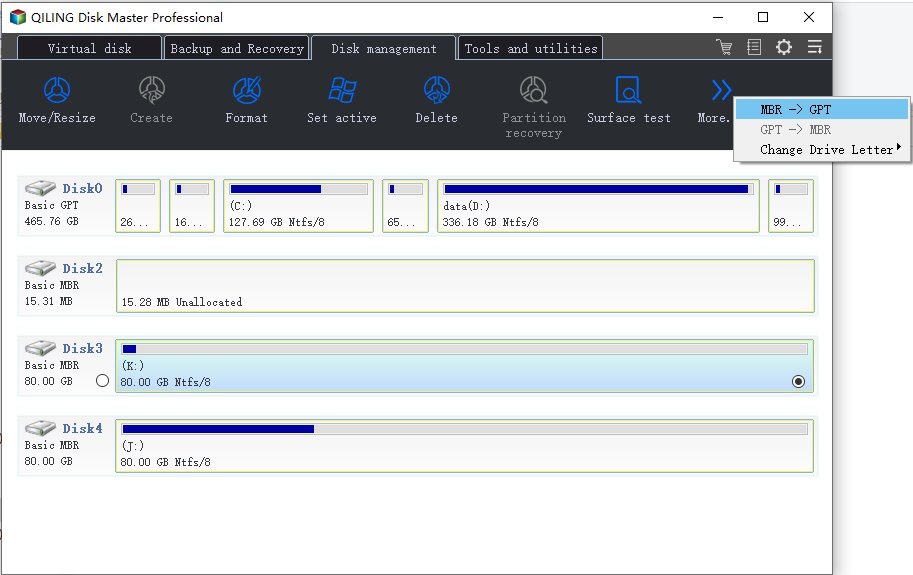
Step 3. Now the converting process will start automatically. Wait until the operation process is finished.
Tip 3. Fix Corrupted System Files to Increase External HDD Speed
If the USB 3.0 external hard drive contains corrupted system files, the file copying or data transferring speed will slow down naturally. SFC command line can efficiently help find and repair the corrupted system files on your external hard drive. Here are the steps to run SFC/SCANNOW.
Step 1. Press Win + X to bring up the Power User menu and select "Command Prompt".
Step 2. Type: sfc /scannow and hit "Enter".
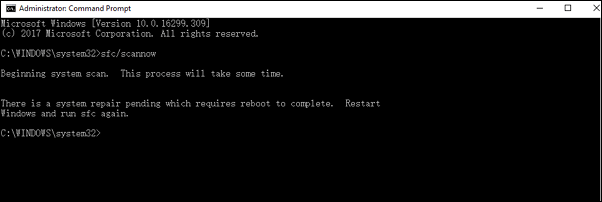
Also read SFC finds corrupted files but unable to fix if anything goes wrong.
Tip 4. Increase Transfer Speed of External Hard Drive by Cleanup
You can clear and remove useless junk files on PC that make your USB 3.0 slow for file transferring. After using the computer for a long time, many useless junk files are taking space on the hard drive. And the best way is to apply a simple free way to clean and remove useless junk files that slow down your USB 3.0 external hard drive for transfer files and data.
Step 1. DOWNLOAD and install Qiling Partition Master Suite for free and launch it on your Windows PC.
On the suite, hover your mouse on "PC Cleaner", click the Download icon to install and launch Qiling CleanGenius.
Step 2. On Qiling CleanGenius, select "Cleanup" on the main screen, and click "Scan" to start scanning.
Step 3. When the scanning process completes, select useless large files and click "Clean" to clean large files.
Step 4. When Qiling CleanGenius completes cleaning the files you choose, click "Done" to finish the process.
Tip 5. Format USB 3.0 External Hard Drive to Speed It Up
Another efficient way to quickly fix the slow external hard drive issue on Windows PC is to format the USB 3.0 external hard drive to NTFS. Format a partition could cause data loss. If you have essential data on the device, copy, and extract crucial data to another hard drive first.
To format the external hard drive to NTFS File System:
Step 1. Connect your external hard drive to a Windows 10 PC.
Step 2. Open File Explorer, locate and right-click on the drive, select "Format".
Step 3. Set the NTFS as the target file system, tick "Quick Format" and click "Start" to start the formatting.
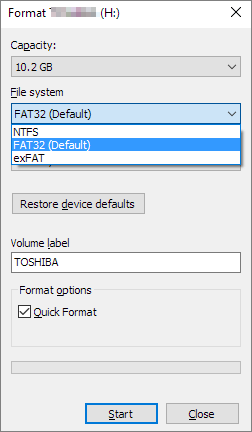
Additional Tip - How to Back Up External Hard Drive Files
Although these methods can help you fix the slow USB 3.0 external hard drive issue, some may also cause unnecessary data loss errors on your drive. To avoid unnecessary data loss issue, you should copy and extract important data on your USB 3.0 external hard drive to your PC or another secure storage device in advance.
You can either choose to copy and paste existing files from your slow external hard drive to a new device at a very slow speed or prefer a more efficient and fast alternative tool to back up and extract all your files from the external hard drive to a new device at one time at high speed.
If you choose the latter option, you may turn to Qiling Backup Free for help. It is easy and risk-free to back up files from your external hard drive with a small space occupation on your target device.
Step 1. To begin the backup process, click the file backup button in the Backup and recovery page.

Step 2. Lists of both local and network files are shown on the left-hand side of the screen. Expanding the directory so that you can choose the files to back up.
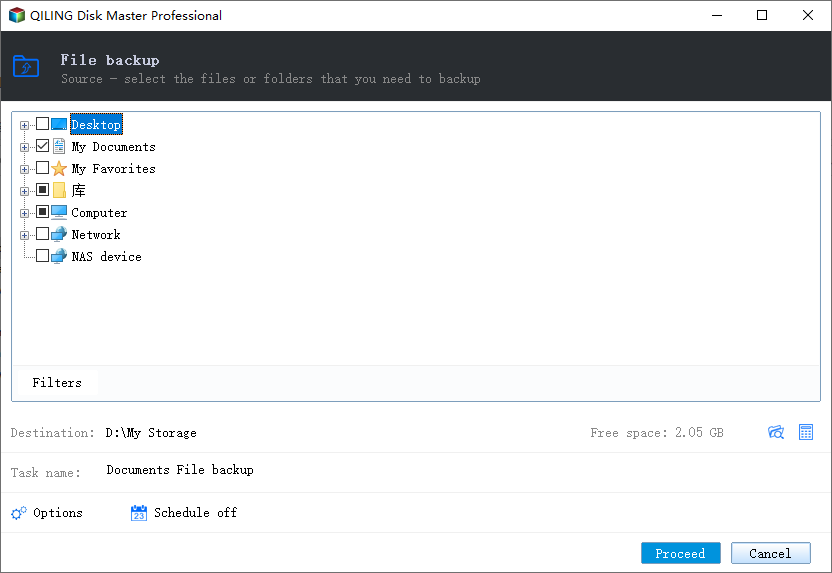
Step 3. Follow the guidance on the screen and choose the place where you want to store the back up.
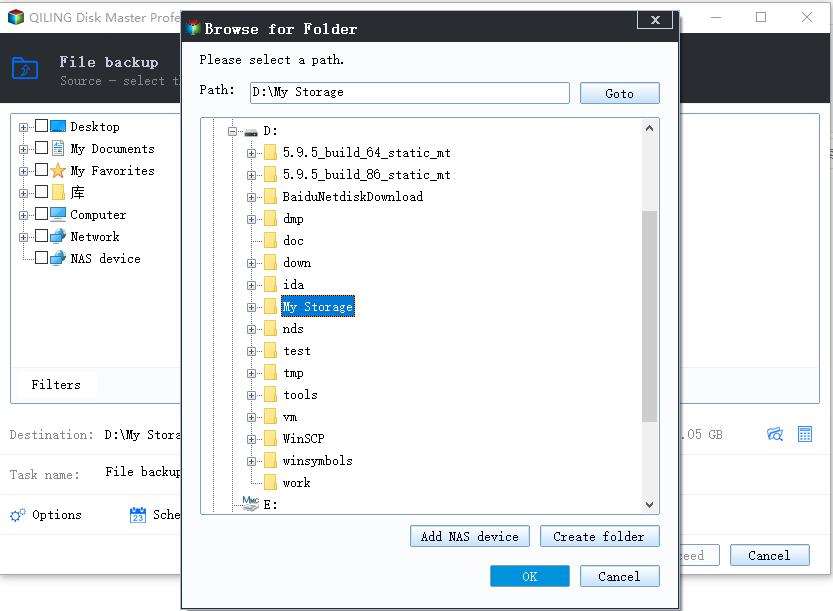
Step 4. Make sure that the backup is encrypted and set the backup schedule by clicking Options in Backup Options. There are many other customizable options that you can look into.
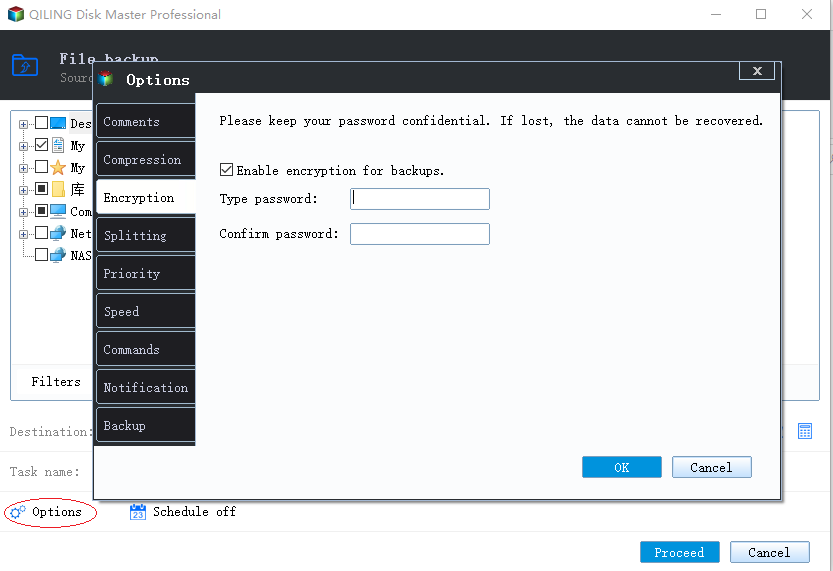
You can also choose to start the backup at a certain time in Backup Scheme by clicking Options.
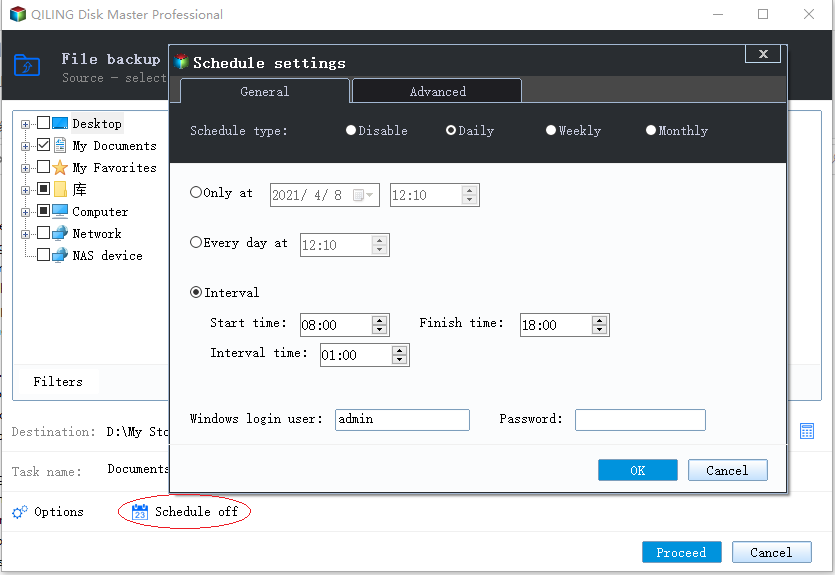
Step 5. You can store the backup file either on your computer, in Qiling's cloud service, or on a network-attached storage device (NAS).
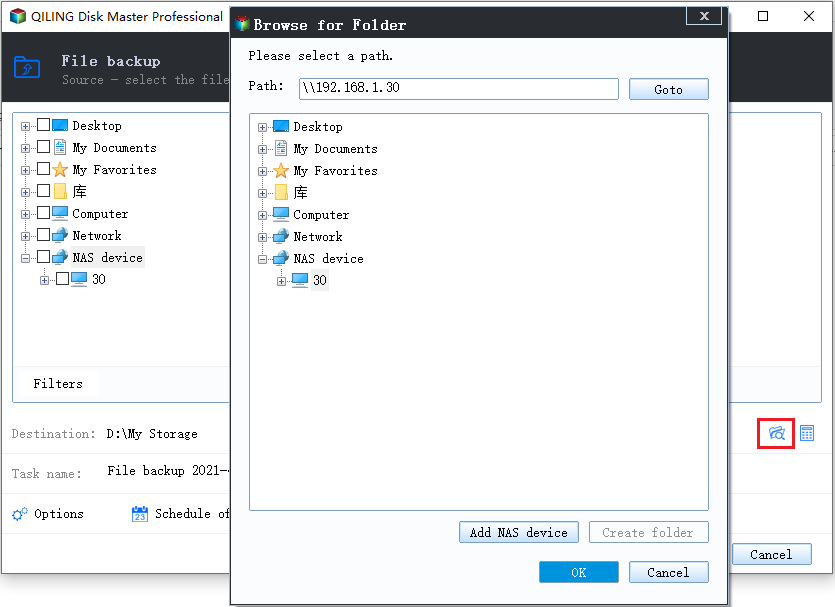
Step 6. Click on Proceed to start a backup. When the backup process is done, it will display as a card on the left-hand side of the screen. A right-click will let you see more about how to handle the backup job in more depth.
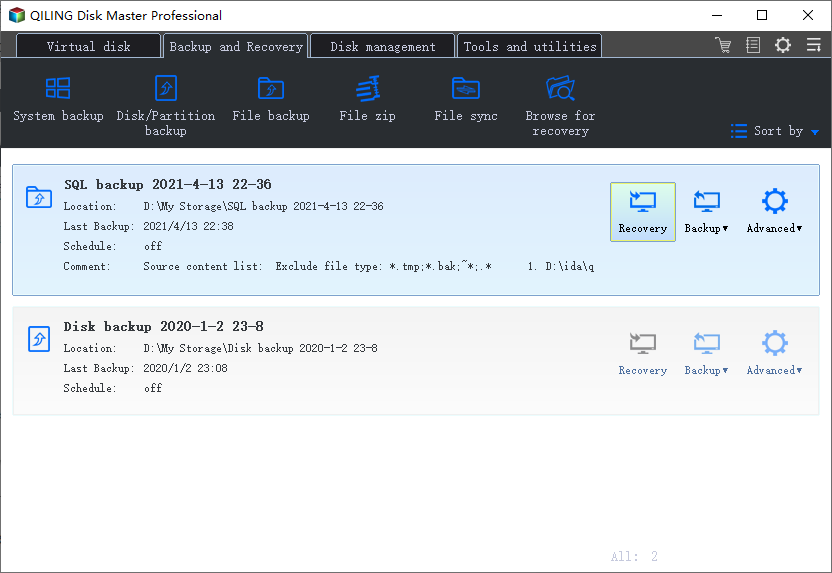
Conclusion
Whenever you are faced with external hard drive slow transfer speed, you can try these solutions above. These tips should help you increase your transfer speeds. Qiling Partition Master Free plays a vital role in solving your slow issue. Besides, this free software can help you with disk management, partition clone, and system migration. You can always try this product to enjoy extra features.
Related Articles
- [2022 Tips] How to Remove Ubuntu from Dual Boot
- 9 Best Tips to Troubleshoot Windows 7 Is Running Slow
- How to Fix Virtual Disk Manager the System Cannot Find the File Specified in Windows 10/8/7
- How to Delete EFI Partition in Windows 11| What Is EFI Partition Windows 11